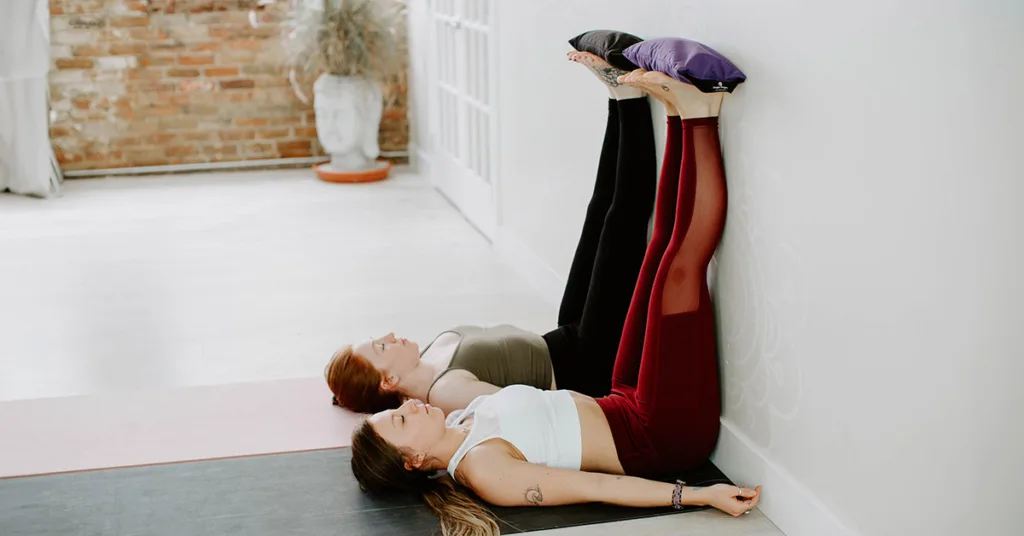
[ad_1]
This entry was posted on Jan 10, 2024 by Charlotte Bell.

A number of years in the past, as a part of a instructor coaching I used to be co-teaching, I demonstrated the issues with squaring your hips in wide-legged standing poses to the trainees. Because it turned out, the demonstration was very efficient—a lot to my chagrin. Virtually on cue, once I got here up out of the pose, I felt a stabbing ache in the suitable aspect of my sacroiliac (SI) joint. I limped over to a wall area, and taught for the following quarter-hour from Viparita Karani (Legs-Up-the-Wall), my favourite SI joint reset pose. The pose did its job. After I returned to an upright place, my SI joint felt simply fantastic.
SI joint points are a number of the commonest accidents associated to yoga observe. There are a number of causes for this. First, there’s the anatomically nonsensical “sq. your hips” instruction in standing poses that so many people have discovered and practiced for years. Then there’s the emphasis on “hip opening” in so many yoga courses. In fact, it’s a good suggestion to keep up hip joint flexibility, however practising excessive hip-opening poses with out balancing it with hip-strengthening poses can destabilize the SI joint. This will make it vulnerable to harm.
What Is SI Joint Dysfunction?
The SI joint is a joint of “cell stability.” Which means the joint must be secure so as to transfer power effectively between the legs and the higher physique. The joint wants solely a tiny quantity of mobility—1 to three mm—to make strolling extra easeful. Once we power the pelvis into unnatural positions (re: squaring the hips in standing poses when one hip is flexed and the opposite is prolonged), over time, the joint destabilizes. Excessive hip opening additionally destabilizes the joint as a result of the sturdy ligaments that maintain the joint collectively grow to be overstretched. As soon as they’re overstretched, they don’t return to their authentic size. This makes it tougher for the joint to remain aligned.
There are a number of methods the SI joint can misalign, inflicting that stabbing ache I skilled. Right here’s an inventory:
- Anterior rotation of the ilium
- Posterior rotation of the ilium
- Flare (gapping) internally/externally of the ilium
- Rotation of the sacral physique
- Superior or inferior slip of the ilium
All these points develop out of circumstances of instability, and most of them are due asymmetry within the joint. Legs-Up-the-Wall is an efficient SI joint reset as a result of it encourages the joint to return to symmetry.
Learn how to Observe Viparita Karani for SI Joint Reset
- Collect your props: Yoga Mat, Yoga Sandbag. You’ll be able to observe this pose with out the Yoga Sandbag, however in my expertise, the additional weight is basically useful. You probably have persistent and even occasional SI joint points, a sandbag is a superb funding.
- Set your Yoga Mat up perpendicular to a wall. Have your sandbag shut by. You may need to have a folded Yoga Blanket useful in case you’d like to put it underneath your head and neck for assist.
- Lie down in your mat and lengthen your legs up the wall, organising as near the wall as doable. It’s vital that your SI joint be flat in opposition to the ground, together with your backbone in a impartial place. Which means your lumbar backbone needs to be curving barely away from the ground—not urgent down into the ground. In case your decrease backbone is rounded, scoot away from the wall till your lumbar backbone is not urgent into the ground.
- Bend your knees, sliding your toes down the wall. Place the sandbag onto the soles of your toes. Then lengthen your legs again up the wall. Alternatively, when you have a pal or yoga instructor shut by, ask them to put the sandbag atop the soles of your toes. Ensure the burden in your toes is even from left to proper.
- Chill out right here for five to 10 minutes.
- While you’re prepared to depart the pose, slide your toes down the wall. Take away the sandbag and set it apart. Gently draw your knees in towards your chest for a number of breaths. Then roll onto your aspect and return to a seated pose. Take a number of breaths in a seated pose, feeling into the hips and SI joint, noticing any modifications.
About Charlotte Bell
Charlotte Bell found yoga in 1982 and commenced educating in 1986. Charlotte is the creator of Aware Yoga, Aware Life: A Information for On a regular basis Observe and Yoga for Meditators, each printed by Rodmell Press. Her third ebook is titled Hip-Wholesome Asana: The Yoga Practitioner’s Information to Defending the Hips and Avoiding SI Joint Ache (Shambhala Publications). She writes a month-to-month column for CATALYST Journal and serves as editor for Yoga U On-line. Charlotte is a founding board member for GreenTREE Yoga, a non-profit that brings yoga to underserved populations. A lifelong musician, Charlotte performs oboe and English horn within the Salt Lake Symphony and folks sextet Pink Rock Rondo, whose DVD received two Emmy awards in 2010.
[ad_2]